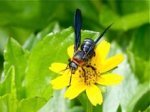Malaysian Hymenoptera:
Bees, Wasps and Ants
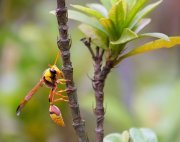 | 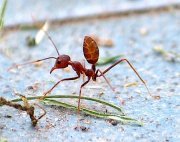 | 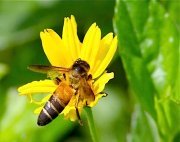 |
Malaysian Bees, Wasps and Ants
We don't have to go far to see Malaysian Hymenoptera (hymen=membrane, ptera=wings) as they comprise those wonderful and amazing insects like bees, wasps and ants.
They are everywhere, wherever there are trees, bushes and plants, in the gardens and parks, and in the yard at home.
In fact we can find these exquisite Malaysian hymenoptera creatures as far as our eyes can travel.
What are its distinguishing features?
Well, this order of Insects possesses a pair of thin membranous wings, with the more advanced members often having (I believe most teenage girls too fancy having it, right?) a narrow waist called petiole.
If we look further, we will find that some of them are highly social insects, living in colonies consisting of different castes (or field of specialisation), with queens, soldiers and workers.
Although some species of these Malaysian hymenoptera are a pest to some crops and plants, (remember, some humans too are really a pest to others) overall, and mostly, they are beneficial and vital for human life and survival.
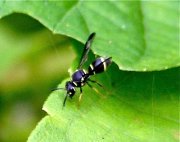 | 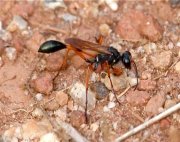 | 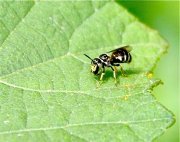 |
Bees and Wasps
Bees and wasps (including hornets) have stings at the tips of their abdomens. These are mainly used for self-defense or for paralyzing prey, before they consume them.
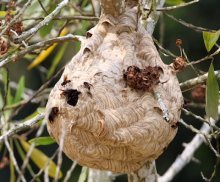 |
Bees and wasps are very important to the eco-system, and especially to certain plants and trees because they help pollinate the flowers of not just the ornamental and lovely ones, but of the staple food crops and fruit trees vital for human consumption.
It is interesting to know that a special group of wasps, known as fig wasps, is essential to the continual survival of many species of fig plants. The figs are fertilised when the female fig wasps carry pollens from one fig to another.
As is well-known, bees have multiple uses for mankind, though they seem to like to buzz around us, giving us that scary feeling of getting stung.
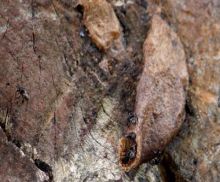 |
That is why honey bees are commercially bred and farmed by people all over the world.
The honey and royal jelly that they produce are natural health products containing many vitamins and at least 17 amino-acids that reputedly also could reduce certain forms of cancer.
Propolis, which is a resin collected by bees, have anti-biotic and anti-viral quality, and helps in the treatment of a wide variety of medical complaints.
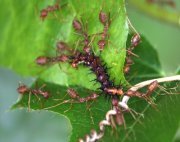 | 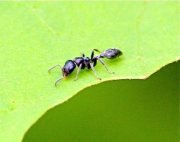 | 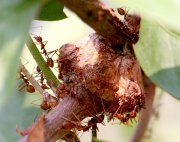 |
Ants
There are hundreds of species of ants found in Malaysia. In the rain-forests, it is estimated that there could possibly be more than 200 species living in just a few hectares of the forests, with many more to be found in various parts of the forests.
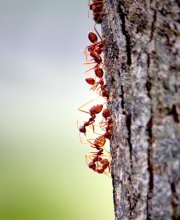 |
Or they may be moving out of their nest in the morning to search for food, to return also in a long line in the evening with such great discipline.
While some ants don't give ferocious bites, some others, however, like the karenga ants with approximate size of 10mm, are rather aggressive, with repellant substances that can give vicious and painful bites to humans.
Ants eat other insects and small invertebrates, while termites consume wood as well as dead leaves.
Like the beetles and some other insects, ants and termites are the cleaners of the forests, stealthily consuming fallen leaves, branches and trees.
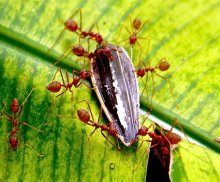 |
See picture (left) of a "kuachi" (dried sunflower seed) thrown by a human at a recreation park, being carried away by the ants!
In Malaysian forests, it is estimated that there are about 3,000 to 4,000 termites per square meter, and they are estimated to remove around 30% of the plant-litter from the jungle floor.
Bees, Wasps and Ants
We also know that these Malaysian Hymenoptera are insects that are some of the most hard-working of God's creatures on earth.
I'm sure we all know of the adage, "as busy as a bee" or "as diligent as an ant".
It is incredible that they seem to be always working, flying around, moving everywhere, in the forests and gardens, and in various places where we live.
They are really God's unique creations that help we, humans, to survive, and they help make the world a better and wonderful place to live.
So do be kind to them, and help preserve the environment to ensure that they continue to help us.
Smile.
Return here from Malaysian Hymenoptera to Insects of Malaysia webpage. Return here from Malaysian Hymenoptera to Malaysia Wildlife and Nature homepage.
Visit Popular Insect Pages
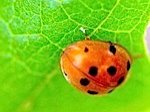 |
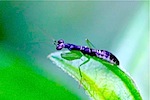 |
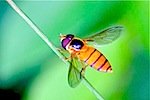 |
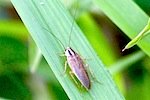 |
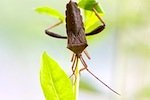 |
 |
Get their best prices HERE! |
Then to eat of all the produce (of the earth), and find with skill the spacious paths of its Lord: there issues from within their bodies a drink of varying colors, wherein is healing for men: verily in this is a Sign for those who give thought. |





